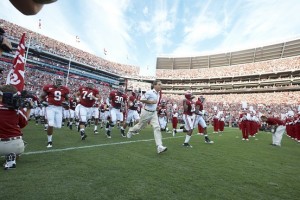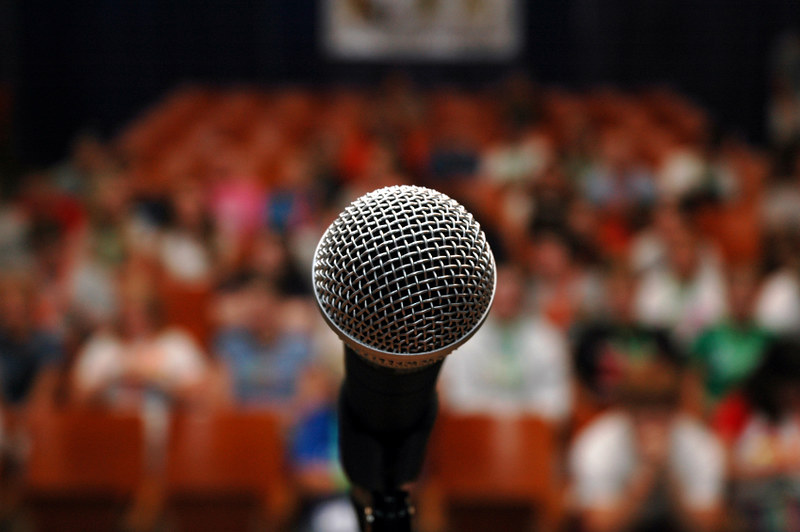Fred Barnes, The Wall Street Journal

Pity the poor presidents of colleges with major athletic programs. Football coaches are not just better known than the administrators, the coaches also tend to make a lot more money. And professors lag even further behind. In 1986, the presidents at 44 public universities with teams in the five most established athletic conferences actually made, on average, a little more than their coaches: $294,000 for the presidents, $273,000 for the coaches; full professors earned about $107,000. By 2010, the professors’ income, adjusted for inflation, had climbed 32%. University presidents’ pay had gone up 90%. The football coaches’ pay jumped to more than $2 million—it had “increased by an astounding seven and a half times,” Charles T. Clotfelter writes in “Big-Time Sports in American Universities.” Mr. Clotfelter cites coaches’ contracts packed with incentives: Nick Saban’s 2010 agreement with the University of Alabama, for instance, included bonuses of $125,000 for winning the Southeastern Conference championship and $200,000 for taking the Crimson Tide to a BCS bowl game. The book offers plenty of other eye-opening statistics but is perhaps most surprising in its even-handed approach to the subject of major college athletics. Mr. Clotfelter is, after all, a professor of public policy and of economics and law at Duke University. Faculty members are often hostile to college sports. But Mr. Clotfelter took a novel tack: “I decided to employ my skills as a social scientist to ask the same elementary questions about big-time college athletics that might be posed by a first-time visitor to this country.”
He wondered, for instance, whether the seemingly lopsided media coverage of college sports—when compared with attention to other aspects of higher education—is a relatively recent phenomenon. Certainly, the media emphasis on big-time college sports is now pronounced: Mr. Clotfelter looked at the New York Times’s coverage of 58 universities with major programs and found that the paper devoted seven times as much attention to sports as to other topics concerning the schools. But it was ever thus. Mr. Clotfelter went back 40 years and then 80 years and found a similar disparity in the Times’s coverage of the same schools. Sports wins, archeology gets left in the dust. Complaints about the outsize importance of college sports, he notes, go back more than a century.
The book’s central theme is that the time has come to end the strange dichotomy on college campuses, where athletic and educational departments exist in parallel universes and regard each other warily. University leaders “typically ignore” athletics “when putting together a formal statement listing their institution’s essential functions and objectives.”
The unwillingness to acknowledge the centrality of major sports on many campuses makes no sense. Football and basketball teams are, for starters, a huge physical presence, with their gigantic stadiums (Bryant-Denny Stadium at Alabama seats 102,000) and large arenas (Dean Dome at the University of North Carolina holds nearly 22,000). “Whether or not universities like to admit it,” Mr. Clotfelter says, “big-time athletics must be counted as one of their significant activities.”
And one of their significant economic centers. The author notes that critics complain “how few big-time programs break even or make a profit.” Sounds scandalous, right? Despite millions that pour in from TV contracts, merchandise and ticket sales, and other sources, athletic departments barely make ends meet. But as Mr. Clotfelter observes, “arbitrary administrative decisions”—like billing the athletic department for students’ phys-ed classes—muddle any net-profit analysis. And there’s no way to measure the role that a high-profile team might play in attracting better students and alumni donations.
Heaven knows, there are problems. Athletes receive shockingly preferential treatment—they take easy courses, and if those prove too difficult tutors practically carry them over the goal line to a passing grade. Despite the help, many athletes are simply out of place in an institution of higher learning and don’t graduate. At 58 universities with major athletic programs in 2010, 72% of students graduated, but only 56% of football players and 42% of basketball players received a diploma.
The biggest source of trouble for college sports, however, is the NCAA’s insistence that athletes remain unpaid amateurs. Coaches desperate for stars to keep programs competitive will, with the help of eager alumni, do almost anything to sign players and keep them happy. New cars, rent-free apartments, and no-show jobs are some of the inducements—in violation of NCAA rules. A recent example: The University of Connecticut basketball team won the national championship earlier this month, but coach Jim Calhoun has been barred from the first three games next season for recruiting infractions that involved a former team manager giving lodging, transportation, and meals to a promising recruit.
“Big-Time Sports in American Universities” doesn’t sugarcoat the downside. Mr. Clotfelter contends, though, that college sports transcend its shortcomings. “For all its flaws—and these are real—big-time college sports also produces a great deal of enjoyment,” he says. “In a word, it produces happiness.” The enjoyment spreads beyond students to entire communities. And valuable lessons are taught. “Embodied in college sports,” he says, “is the principle of meritocracy.”
Overshadowed and less-well-remunerated college presidents and faculty might find that message hard to swallow, but it’s in their interest to hope that, in the meritocracy of college sports, their team wins.





